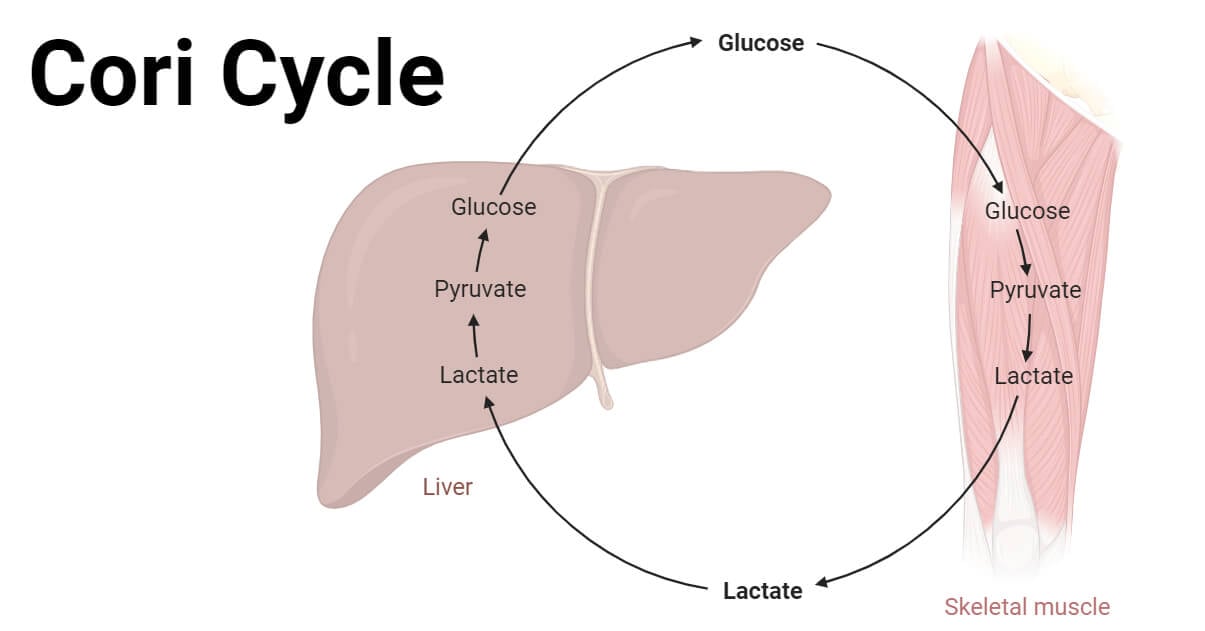The Cori Cycle, also known as the lactic acid cycle, is a vital metabolic pathway that operates within the human body to regulate glucose and lactate levels.
It plays a crucial role in maintaining glucose homeostasis during periods of high-intensity exercise or when the body requires rapid energy. The Cori Cycle involves the interconversion of lactate and glucose between muscle and liver cells.
Interesting Science Videos
Metabolic Overview
Metabolism encompasses all the biochemical reactions occurring within an organism, including processes that transform molecules into energy, building blocks for cells and tissues, and waste elimination. It is fundamental for the maintenance of life, enabling growth, repair, and the efficient functioning of the body’s systems.
Energy production and utilization are central to metabolism. Energy is essential for various bodily functions, from cellular activities to physical movement. Metabolism involves converting nutrients, such as glucose and fats, into usable energy in the form of adenosine triphosphate (ATP), providing the energy required for diverse biological processes.
Glucose, a simple sugar, is a primary energy source in metabolism. It can be oxidized through processes like glycolysis to produce ATP. Glucose metabolism is pivotal as it provides a readily available and efficient source of energy for the body’s cells and organs.
Glycolysis: The First Step
Glycolysis is the enzymatic pathway that breaks down glucose, a six-carbon sugar, into two molecules of pyruvate, a three-carbon compound. It occurs in the cytoplasm of cells and is the first step in both aerobic and anaerobic cellular respiration.
Glycolysis involves a series of enzymatic reactions, each catalyzed by specific enzymes. Key enzymes include hexokinase, phosphofructokinase, and pyruvate kinase. Reactions include phosphorylation, isomerization, oxidation, and substrate-level phosphorylation.
Likewise, it yields a net production of two ATP molecules and two NADH molecules for each glucose molecule. Pyruvate, a pivotal metabolite, is formed during glycolysis and serves as a precursor for various metabolic pathways.
Lactate Formation
In anaerobic conditions or during intense exercise, pyruvate generated from glycolysis can be converted to lactate through the action of lactate dehydrogenase. This conversion helps regenerate NAD+ necessary for glycolysis to continue in the absence of oxygen.
Lactate dehydrogenase is the enzyme responsible for the reversible conversion of pyruvate to lactate. It utilizes NADH to reduce pyruvate to lactate, allowing for the recycling of NAD+ in the glycolytic pathway.
Lactate production is a means to regenerate NAD+ and sustain glycolysis under anaerobic conditions. Lactate itself can be utilized as an energy source in various tissues, and its production is a vital component of the body’s adaptive response to varying metabolic demands.
Lactate Transport and the Cori Cycle
Lactate is transported from muscle tissue to the liver via the bloodstream. It is taken up by liver cells (hepatocytes) through specific lactate transporters.
Key Steps in the Cori Cycle
- Lactate uptake by the liver: Lactate enters hepatocytes in the liver via lactate transporters.
- Lactate conversion to glucose: In the liver, lactate is converted to glucose through gluconeogenesis.
- Glucose release into the bloodstream: The newly synthesized glucose is released into the bloodstream to be used by other tissues for energy.

Liver’s Role and Significance in the Cori Cycle
The liver acts as a central hub in the Cori Cycle, playing a vital role in recycling lactate generated by muscles during intense exercise.
It converts lactate to glucose, replenishing the body’s glucose stores and ensuring a continuous energy supply during prolonged activity.
Regulation of the Cori Cycle
Regulatory Mechanisms Controlling Lactate Production
- Enzyme activity: Enzymes involved in glycolysis and lactate production are regulated based on energy demands and metabolic conditions.
- Hormonal control: Hormones like insulin and glucagon influence the rate of glucose and lactate production.
Factors Influencing Cori Cycle’s Activity
- Exercise intensity: Higher intensity exercise results in increased lactate production and utilization by the Cori Cycle.
- Glucose availability: The availability of glucose influences the Cori Cycle’s rate, as it directly affects the conversion of lactate to glucose in the liver.
Adaptive Responses of the Cori Cycle to Various Conditions
The Cori Cycle adapts to changes in energy demands, substrate availability, and metabolic conditions to maintain glucose homeostasis and support the body’s energy needs during different activities and conditions.
Conclusion
Cori Cycle emerges as a fundamental movement, ensuring a rhythmic supply of energy to our body’s cells.
As lactate travels from muscle to liver, transforming into glucose, this cycle embodies resilience and adaptability, shaping our response to varying levels of exertion. Appreciating the harmonious interplay of enzymes, hormones, and tissues within the Cori Cycle unveils promising avenues for understanding.
References
- https://www.sciencedirect.com/topics/biochemistry-genetics-and-molecular-biology/cori-cycle
- http://hyperphysics.phy-astr.gsu.edu/hbase/Biology/Cori.html
- https://pubchem.ncbi.nlm.nih.gov/pathway/WikiPathways:WP1946
- https://pubmed.ncbi.nlm.nih.gov/33674148/
- https://journals.physiology.org/doi/10.1152/ajpendo.1998.275.3.e537
- https://www.acs.org/education/whatischemistry/landmarks/carbohydratemetabolism.html
- https://pubs.acs.org/doi/10.1021/bi00853a002
